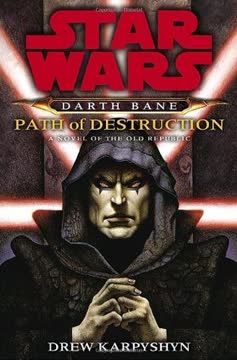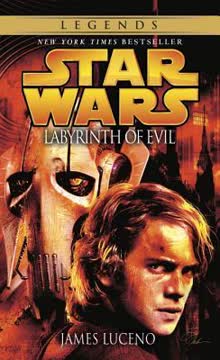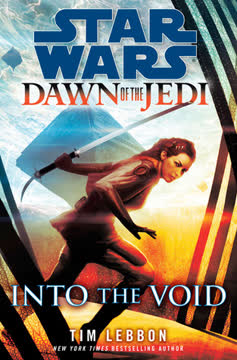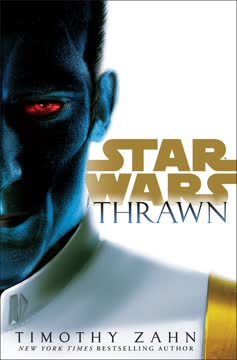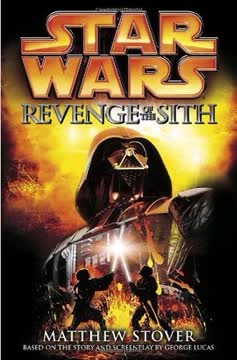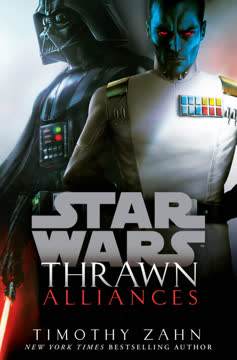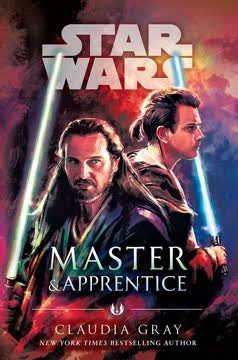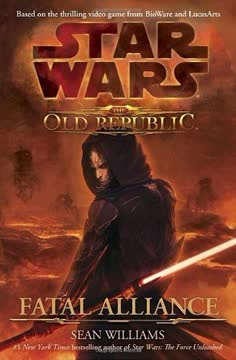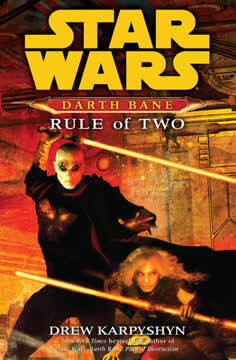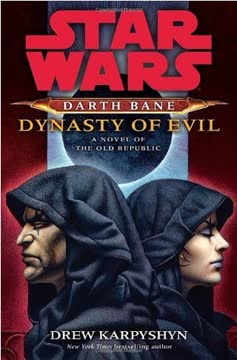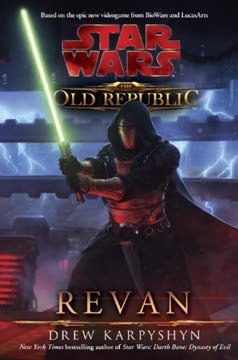Plot Summary
Dark Victory on Korriban
Bane, once a promising Sith apprentice, faces a crushing defeat at the hands of Sirak, the Academy's top student. This loss leaves him physically and emotionally shattered, turning him into an outcast among his peers. His dreams of power and glory seem irreparably damaged, and he is left questioning his place within the Sith order. This pivotal moment sets the stage for Bane's journey of self-discovery and his eventual rise to power.
Desperate Struggle for Power
Despite his defeat, Bane refuses to succumb to despair. He immerses himself in the ancient Sith texts, seeking knowledge and power. His isolation becomes a source of strength as he begins to understand the deeper truths of the dark side of the Force. Bane realizes that his anger and hatred, once his greatest assets, have become his chains. Determined to break free, he embarks on a path to reclaim his power and redefine his destiny.
Githany's Seductive Alliance
Githany, a former Jedi turned Sith, approaches Bane with an offer of alliance. She sees potential in him and offers to train him in secret, sharing her knowledge of the Force. Githany's motives are not entirely selfless; she seeks to use Bane as a tool to defeat Sirak. Despite his initial mistrust, Bane accepts her offer, viewing it as a chance to regain his lost power and position within the Sith Academy hierarchy.
Bane's Secret Training
Bane secretly trains with both Githany and the Blademaster Kas'im. Githany teaches him the ways of the dark side of the Force, while Kas'im hones his lightsaber skills. Bane's power grows rapidly, and he begins to surpass his peers. He keeps his progress hidden, waiting for the right moment to reveal his true strength. Bane's ambition and cunning drive him to become a formidable force within the Sith Academy, setting the stage for his eventual rise.
The Rise of the Sith Army
Meanwhile, Lord Kaan, leader of the Brotherhood of Darkness, plans to gather all Sith forces to confront the Jedi on Ruusan. The Jedi, led by General Hoth, have formed an Army of Light to oppose the Sith. Kaan's strategy is to exploit the Jedi's compassion and overextended lines, aiming to crush them with a concentrated attack. The Sith prepare for a decisive battle that could determine the fate of the galaxy, with Bane's ambitions quietly simmering in the background.
Bane's Inner Turmoil
Despite his growing power, Bane is haunted by his past. Memories of his abusive father and the realization that he killed him with the Force plague his thoughts. Bane grapples with guilt and fear, questioning whether he can control the dark side of the Force or if it will consume him. His inner turmoil threatens to undermine his progress, but he is determined to overcome it and seize his destiny, setting the stage for his ultimate transformation.
Bane's Dark Revelation
Bane, having absorbed the teachings of Darth Revan, realizes the Sith's failure lies in their numbers and infighting. He envisions a new order: the Rule of Two, where only a Master and an apprentice exist. This revelation comes as he studies a Holocron on the Unknown World, understanding that the dark side of the Force's power must be concentrated, not dispersed. Bane's plan is to destroy the Brotherhood of Darkness, which he sees as a perversion of true Sith ideals, and rebuild the Sith from the ground up.
Githany's Treacherous Kiss
Githany, sent by Kaan to eliminate Bane, uses her charm to poison him with a kiss. Bane, initially confident in his immunity to poison, is caught off guard by the subtlety of the synox toxin. As he struggles against the effects, he realizes Githany's cunning and the depth of his own arrogance. Despite the betrayal, Bane sees potential in Githany's ambition and considers her as a possible apprentice, though he remains wary of her true intentions.
Kaan's Desperate Gambit
Facing defeat, Kaan decides to use the thought bomb, a powerful Sith weapon capable of annihilating all Force-sensitive beings on Ruusan. He gathers the Brotherhood of Darkness in a cave, intending to unleash the bomb against the Jedi. However, his madness and desperation blind him to the true danger of the weapon. Bane, manipulating events from the shadows, sees this as the perfect opportunity to rid the galaxy of the Brotherhood and pave the way for his new Sith order.
The Thought Bomb's Devastation
As Kaan and the Brotherhood prepare to detonate the thought bomb, General Hoth and his Jedi enter the caves, determined to stop them. The bomb is unleashed, obliterating both Sith and Jedi, trapping their spirits in eternal stasis. Bane, having anticipated this outcome, remains safely away, ensuring the destruction of the Brotherhood. The thought bomb's detonation marks the end of the Sith as the galaxy knows them, leaving Bane as the sole survivor to rebuild the order.
Bane's New Apprentice
In the aftermath of the thought bomb, Bane encounters a young girl named Zannah, who has killed two Jedi in a fit of rage. Recognizing her raw power and potential, Bane sees her as the perfect candidate for his apprentice. He offers to teach her the ways of the dark side of the Force, beginning the new era of the Sith under the Rule of Two. Zannah's acceptance of Bane's offer signifies the rebirth of the Sith, with Bane as the Master and Zannah as the apprentice.
Characters
Bane
Bane emerges as the true visionary of the Sith, rejecting the Brotherhood's flawed ideology. His understanding of the dark side of the Force leads him to the Rule of Two, a radical restructuring of the Sith order. Bane's cunning and ruthlessness are matched by his patience and foresight, making him a formidable force destined to reshape the galaxy.
Githany
Githany's betrayal of Bane with a poisoned kiss highlights her ambition and willingness to use any means to achieve power. Despite her treachery, Bane sees potential in her understanding of the dark side of the Force's true nature. Her complex relationship with Bane is marked by mutual manipulation and a shared desire for power.
Kas'im
A Twi'lek Sith Lord, Kas'im is the Sith Academy's Blademaster. He secretly trains Bane in lightsaber combat, recognizing his potential. Kas'im is a master of the double-bladed lightsaber and teaches Bane to let the Force guide his blade. He is a pragmatic teacher, focused on results rather than loyalty to Qordis.
Lord Qordis
Qordis is the head of the Sith Academy on Korriban. He dismisses Bane as a failure after his defeat by Sirak, focusing his attention on more promising students. Qordis is ambitious and politically savvy, aligning himself with the Brotherhood of Darkness. He is wary of potential rivals and seeks to maintain his power.
Sirak
A Zabrak apprentice, Sirak is the most powerful student at the Sith Academy. He is skilled in lightsaber combat and has powerful allies. Sirak is arrogant and ruthless, seeing Bane as beneath him after their duel. He is a formidable opponent, and Bane's ultimate goal is to defeat him.
Lord Kaan
Kaan's desperation leads him to the brink of madness as he plans to use the thought bomb. His charismatic leadership once united the Sith, but his inability to see beyond his own delusions ultimately leads to the Brotherhood's destruction. Kaan's tragic flaw is his refusal to acknowledge the true nature of the dark side of the Force.
Zannah
Zannah, a young girl with immense potential, becomes Bane's apprentice after demonstrating her power by killing two Jedi. Her acceptance of Bane's teachings marks the beginning of a new era for the Sith. Zannah's journey from innocence to darkness is a testament to the seductive power of the dark side of the Force.
Plot Devices
The Dark Side of the Force
The dark side of the Force is central to the story, offering power to those who can harness it. Bane's struggle to control the dark side of the Force reflects his inner conflict and ambition. The dark side of the Force fuels the Sith's quest for dominance, but it also threatens to consume them, creating tension and drama.
The Sith Academy
The Sith Academy on Korriban is a place of intense training and competition. Students vie for the attention of the Masters, and rivalries often turn deadly. The Sith Academy serves as a backdrop for Bane's rise and fall, highlighting the brutal nature of the Sith and their quest for power.
The Brotherhood of Darkness
Led by Kaan, the Brotherhood of Darkness seeks to destroy the Jedi and conquer the galaxy. The Brotherhood's unity is both a strength and a weakness, as internal rivalries and ambition threaten to tear it apart. The Brotherhood's campaign against the Jedi drives the story's larger conflict.
The Thought Bomb
The thought bomb is a powerful Sith ritual capable of annihilating all Force-sensitive beings within its radius. Kaan's decision to use it reflects his desperation and madness. The thought bomb's detonation serves as the catalyst for the Brotherhood's destruction and Bane's rise to power, symbolizing the dark side of the Force's potential for both creation and annihilation.
The Rule of Two
Bane's vision for the Sith, the Rule of Two, dictates that there should only be a Master and an apprentice. This philosophy ensures the concentration of the dark side of the Force's power and prevents the infighting that has plagued the Sith for generations. The Rule of Two becomes the foundation for the Sith's future, guiding Bane's actions and shaping the order's destiny.
Analysis
"Path of Destruction" explores the themes of power, ambition, and transformation through the journey of Bane. The book delves into the seductive nature of the dark side of the Force and the personal cost of seeking ultimate power. Bane's evolution from a broken apprentice to the architect of the Sith's future highlights the destructive and creative potential of ambition. The introduction of the Rule of Two marks a significant shift in Sith philosophy, emphasizing the need for concentrated power and the dangers of unchecked ambition. The story serves as a cautionary tale about the perils of power and the importance of vision and foresight in shaping one's destiny.
Last updated:
FAQ
Synopsis & Basic Details
What is Path of Destruction about?
- Origin of Darth Bane: The novel chronicles the transformation of Dessel, a cortosis miner on the desolate world of Apatros, into Darth Bane, the legendary founder of the Rule of Two. It follows his brutal upbringing, his accidental discovery of his Force abilities, and his escape from a life of servitude to join the Sith.
- Sith Brotherhood's Flaws: The story delves into the internal conflicts and philosophical weaknesses of the Brotherhood of Darkness, led by Lord Kaan, as they wage war against the Jedi's Army of Light. Bane quickly recognizes the inherent flaws in Kaan's vision of a unified, egalitarian Sith order.
- Rebirth of the Sith: Ultimately, "Path of Destruction" is about Bane's radical vision to reform the Sith. He seeks to purge the existing order, which he views as corrupted and weak, and establish a new, more potent lineage based on the principle of two: one Master and one apprentice, ensuring the dark side's power is concentrated and its legacy endures.
Why should I read Path of Destruction?
- Deep Dive into Sith Philosophy: This book offers an unparalleled exploration of Sith ideology, contrasting the flawed Brotherhood of Darkness with Bane's ruthless, pragmatic vision for the dark side. It's essential for understanding the philosophical underpinnings of the Sith.
- Compelling Character Transformation: Witness Dessel's brutal journey from an oppressed miner to a cunning, powerful Dark Lord. His internal struggles, intellectual growth, and ruthless decisions make for a captivating character study, showcasing the psychological toll and allure of the dark side.
- Foundational Star Wars Lore: As the origin story of Darth Bane and the Rule of Two, this novel is a cornerstone of Star Wars lore, explaining how the Sith survived near-extinction and eventually led to the rise of Darth Sidious and the Galactic Empire. It provides crucial context for the entire saga.
What is the background of Path of Destruction?
- Old Republic Era Conflict: The story is set a thousand years before the Galactic Empire, during the waning days of the Old Republic, which is embroiled in a galaxy-spanning war against the resurgent Sith Brotherhood of Darkness. This era is characterized by large-scale conflicts between Jedi and Sith armies.
- Sith Resurgence & Jedi Response: The Sith, once thought extinct, have risen in legion under Lord Kaan, establishing academies and conquering worlds. In response, the Jedi have formed the Army of Light, led by General Hoth, to combat this existential threat, leading to a brutal war of attrition on worlds like Ruusan.
- Technological & Cultural Context: The galaxy is technologically advanced with hyperspace travel, blasters, and droids, but the Force remains a mystical, often misunderstood power. The cultural backdrop includes the Republic's democratic ideals clashing with the Sith's pursuit of individual power, and the harsh, exploitative conditions of Outer Rim worlds like Apatros.
What are the most memorable quotes in Path of Destruction?
- "Peace is a lie. There is only passion. Through passion, I gain strength. Through strength, I gain power. Through power, I gain victory. Through victory my chains are broken.": This is the iconic Sith Code, recited by Bane and serving as the philosophical core of the dark side, directly contrasting the Jedi Code and encapsulating Bane's journey from servitude to ultimate freedom.
- "Two there should be; no more, no less. One to embody the power, the other to crave it.": This quote reveals Bane's revolutionary "Rule of Two," a radical reinterpretation of Sith philosophy that becomes the foundation for the Sith's survival and future dominance, ensuring the concentration of dark side power.
- "Honor is a fool's prize. Glory is of no use to the dead.": Spoken by Bane to Kas'im, this line starkly illustrates Bane's pragmatic and ruthless rejection of traditional warrior codes, emphasizing survival and victory above all else, a key tenet of his evolving Sith philosophy.
What writing style, narrative choices, and literary techniques does Drew Karpyshyn use?
- Gritty, Immersive Realism: Karpyshyn employs a visceral, grounded style, particularly in Dessel's early life, using sensory details of the mines ("screeching whine," "clouds of atomized dust") to immerse the reader in his harsh reality, making his eventual embrace of the dark side feel earned and understandable.
- Internal Monologue & Psychological Depth: The narrative frequently dives into Bane's internal thoughts, revealing his motivations, doubts, and intellectual processes. This first-person-like access to his mind allows for a deep psychological exploration of his transformation, contrasting his outward actions with his inner turmoil, especially regarding his past and the nature of the Force.
- Foreshadowing and Thematic Echoes: Karpyshyn subtly weaves in foreshadowing, such as Dessel's precognitive flashes during sabacc games and fights, hinting at his latent Force abilities. Recurring themes like "chains" and "freedom" are echoed throughout the narrative, connecting Dessel's escape from Apatros to Bane's philosophical liberation of the Sith.
Hidden Details & Subtle Connections
What are some minor details that add significant meaning?
- Cortosis Mining as a Metaphor: The description of cortosis as "one of the hardest materials in the galaxy" that "wore down the head of a jack" and was "hard on the equipment... and even harder on the miners" subtly foreshadows Bane's own resilience and the brutal, grinding nature of his existence, which ultimately forges his strength. It also symbolizes the Republic's reliance on a material that is inherently destructive to those who extract it, highlighting their hypocrisy.
- Groshik's Stunner and Neutrality: Groshik, the Neimoidian cantina owner, keeps a "BlasTech CS-33 Firespray stun rifle" and uses it to maintain order, even against the Republic soldiers. His strict neutrality ("Bad for business") and willingness to use force to protect his establishment, while also helping Bane escape, subtly mirrors Bane's own pragmatic approach to power and self-preservation, valuing results over ideology.
- The Bouncers' Madness: The native Ruusan bouncers, initially described as peaceful creatures projecting "succor and comfort," are driven to "madness" by the Sith rituals and the thought bomb. This detail symbolizes the corrupting influence of the dark side on the natural world and innocent beings, highlighting the collateral damage of the Sith-Jedi conflict beyond just the combatants.
What are some subtle foreshadowing and callbacks?
- Dessel's Precognitive Flashes: Early in the story, Dessel experiences "brief glimpses into the future" during his fight with Gerd and while playing sabacc, which he attributes to "instinct." This subtly foreshadows his innate Force sensitivity, which he later learns to harness, revealing that his power was always present, even before formal training.
- Kas'im's Double-Bladed Lightsaber Explanation: Kas'im explains that the double-bladed lightsaber's advantage isn't inherent power, but the "confusion" it causes in opponents who "don't fully understand what it can and cannot do." This foreshadows Bane's later strategy of using deception and exploiting his enemies' assumptions, a core tenet of his Rule of Two philosophy.
- Groshik's Parting Words: Groshik tells Dessel, "In the end each of us is in this alone. The survivors are those who know how to look out for themselves." This callback to Bane's core belief reinforces his individualistic path and justifies his later betrayals, showing that this philosophy was ingrained in him from his earliest days.
What are some unexpected character connections?
- Caleb's Unconventional Power: Caleb, the healer on Ambria, possesses a unique connection to the Force that is "not the power of either the dark side or the light." His strength is drawn from "ground and stone; mountain and forest; the land and the sky," representing a primal, neutral Force connection that Bane finds "disturbing, unsettling." This highlights the diverse manifestations of the Force beyond the traditional Jedi/Sith dichotomy.
- Revan's Holocron as a Mentor: Darth Revan, a figure from ancient Sith history, becomes Bane's most influential mentor through his Holocron. This connection is unexpected because Revan eventually returned to the light, yet his dark side teachings are crucial for Bane's development, suggesting that even redeemed figures can leave behind powerful, corrupting legacies.
- The Bouncers' Link to the Force: The bouncers' ability to project "mental images of succor and comfort" and later "twisted nightmares" reveals a deep, empathetic connection to the Force and the emotional state of Ruusan. Their transformation from healers to tormentors underscores the profound impact of the Sith-Jedi war on the planet's ecosystem and its Force-sensitive inhabitants.
Who are the most significant supporting characters?
- Groshik, the Pragmatic Gatekeeper: Groshik is pivotal in Bane's escape from Apatros and his initial entry into the Sith world. His cynical wisdom ("Agree with someone and they'll be your friend for the rest of the night. Cross them and they might hate you for weeks") and his observation of Bane's raw, uncontrolled power ("You were projecting waves of emotion, a storm of anger and fury") provide early insights into Bane's nature and the dark side's influence.
- Kas'im, the Unwitting Catalyst: The Blademaster Kas'im, despite being Qordis's subordinate, becomes Bane's true lightsaber mentor, teaching him advanced techniques and inadvertently revealing the flaws in the Brotherhood's philosophy. His final duel with Bane, where he unveils his dual-saber style, pushes Bane to a new level of power and understanding, making him a crucial stepping stone in Bane's ascent.
- Darth Revan's Holocron, the Ancient Guide: Though long dead, Revan's Holocron acts as Bane's most profound teacher, revealing the true history and philosophy of the Sith, including the concept of the Rule of Two. This ancient artifact provides Bane with the intellectual framework to dismantle the Brotherhood and reshape the Sith order, making Revan's legacy instrumental to Bane's future.
Psychological, Emotional, & Relational Analysis
What are some unspoken motivations of the characters?
- Kaan's Fear of Irrelevance: Lord Kaan's charismatic leadership and insistence on "equality" within the Brotherhood, despite the dark side's inherent individualism, is driven by an unspoken fear of the Sith's historical infighting and his own inability to control truly powerful rivals. He seeks unity not from strength, but from a desperate need to prevent the self-destruction that plagued previous Sith orders, as evidenced by his "wild panic" and "desperation" when things go wrong.
- Qordis's Jealousy and Control: Lord Qordis's dismissal of Bane and his later attempts to control Bane's learning are subtly motivated by his deep-seated rivalry with Kopecz, who brought Bane to the Academy. Qordis views Bane's success as a reflection on Kopecz, and his attempts to curb Bane's independent study are a means to assert his own authority and prevent Bane from surpassing him or his favored student, Sirak.
- Githany's Calculated Affection: Githany's seduction and alliance with Bane are driven by a cold, calculated ambition. While she admits a physical attraction, her primary motivation is to use Bane as a tool to eliminate Sirak and advance her own power. Her "coy smile" and "poison-slicked lips" during their kiss reveal her manipulative nature, always seeking an advantage, even in intimacy.
What psychological complexities do the characters exhibit?
- Bane's Guilt and Self-Loathing: Bane grapples with profound guilt over his father's death and Fohargh's murder, which temporarily "left him numb to the dark side." This internal conflict reveals a hidden moral compass, a struggle between his inherent ruthlessness and a lingering sense of responsibility, making his eventual embrace of pure dark side philosophy a conscious, painful choice rather than a simple descent.
- General Hoth's Obsession and Despair: Hoth's relentless pursuit of the Sith on Ruusan transforms from a noble cause into a "personal vendetta," driving him to the brink of madness and despair. His inability to sleep, his "angry growl," and his eventual weeping over Pernicar's body highlight the psychological toll of prolonged warfare and the danger of allowing hatred to consume even a Jedi Master.
- Kaan's Charismatic Madness: Lord Kaan exhibits a complex blend of charisma and delusion. He can inspire fervent loyalty through his "battle meditation" and "beaming confidence," yet his internal state is one of "wild panic" and "madness." This duality shows how a leader can project strength while internally crumbling, ultimately leading his followers to destruction through his own psychological instability.
What are the major emotional turning points?
- Bane's Realization of His Father's Death: The nightmare where Bane realizes he unconsciously killed his father with the Force ("Hurst had died that night... Neither had Bane. Not until now") is a pivotal emotional turning point. It forces him to confront the true, destructive power of his abilities and the dark side, leading to a period of self-doubt and withdrawal.
- Githany's Vision of Bane's Betrayal: Githany's "vision" of Bane coming to Ruusan "to destroy us" is a significant emotional shock. It shatters her carefully constructed alliance with Kaan and forces her to confront the possibility of Bane's true power and intentions, leading to her desperate attempt to poison him.
- Hoth's Dream of Pernicar: General Hoth's dream of his deceased friend Pernicar, who tells him, "There is no shame in falling... There is only shame if you refuse to rise once again," is a profound emotional turning point. It helps Hoth overcome his despair and guilt, renewing his resolve to lead the Jedi and make the ultimate sacrifice, demonstrating the enduring power of friendship and guidance.
How do relationship dynamics evolve?
- Bane and Githany: From Manipulation to Mutual Respect (and back): Their relationship begins as a calculated alliance where Githany manipulates Bane for her own gain. As Bane grows stronger, a complex dynamic of mutual attraction and respect develops, but it's ultimately shattered by Githany's final, fatal betrayal, revealing the inherent treachery of the dark side.
- Hoth and Farfalla: From Antagonism to Sacrifice: General Hoth initially views Lord Farfalla as an "insufferable" and "prancing fool," leading to open conflict and a fractured Army of Light. However, through shared adversity and Hoth's eventual humility, their relationship evolves into one of mutual trust and sacrifice, culminating in Farfalla leading the remaining Jedi to safety while Hoth faces the thought bomb.
- Bane and Kas'im: Mentor, Rival, and Victim: Kas'im initially dismisses Bane but later secretly trains him, becoming a true mentor who pushes Bane's combat skills. This mentorship transforms into a rivalry as Bane surpasses him, culminating in Bane's ruthless killing of Kas'im. This dynamic illustrates the Sith principle of the apprentice eventually surpassing and destroying the master, even a respected one.
Interpretation & Debate
Which parts of the story remain ambiguous or open-ended?
- The Nature of the Sith'ari Prophecy: The legend of the Sith'ari, a "perfect being" who will lead the Sith, is mentioned but never definitively confirmed or denied. Qordis dismisses it as a legend, while Bane's actions align with its spirit, leaving readers to debate whether Bane truly fulfills an ancient prophecy or simply creates his own destiny through sheer will and intellect.
- The Extent of Bane's Force Control in Early Life: While Bane's precognitive flashes and his father's death are attributed to the Force, the narrative leaves some ambiguity about how conscious or intentional his early Force use was. This invites debate on whether his dark side connection was a latent, uncontrollable instinct or a nascent, albeit untrained, power he was already wielding.
- The Bouncers' Sentience and Purpose: The bouncers are described as "sentient" and capable of projecting "mental images of succor and comfort," but their true nature and role in the Force are not fully explained. Their madness after the Sith rituals leaves their ultimate fate and the full scope of their connection to Ruusan's Force energy open to interpretation.
What are some debatable, controversial scenes or moments in Path of Destruction?
- Bane's Unconscious Patricide: The revelation that Dessel unconsciously used the Force to cause his father's fatal heart attack is highly controversial. It raises questions about moral responsibility, the nature of the dark side's influence, and whether Dessel was inherently evil or merely a product of his abusive environment, making his path to Darth Bane more complex.
- Caleb's Sacrifice of His Family: Caleb, the healer, sacrifices his entire family to Bane to save his daughter, then his daughter to save himself. This moment is debatable because it forces a character to make an impossible choice, highlighting the brutal pragmatism of survival in a dark galaxy and challenging traditional notions of heroism and morality.
- Githany's Final Betrayal and Motivation: Githany's decision to poison Bane, despite their intimate connection and her earlier vision, is a controversial act. Readers can debate whether this was a purely calculated move for power, a desperate act of self-preservation, or a reflection of her own corrupted nature, questioning the sincerity of any affection she might have felt for Bane.
Path of Destruction Ending Explained: How It Ends & What It Means
- The Purging of the Old Order: The novel culminates in the detonation of the thought bomb, orchestrated by Bane, which annihilates Lord Kaan, the Brotherhood of Darkness, and General Hoth's Army of Light. This catastrophic event signifies the complete destruction of the old, flawed Sith order and the Jedi's most formidable fighting force, clearing the slate for Bane's new vision.
- The Birth of the Rule of Two: Bane, as the sole surviving Sith Lord, finds Rain (Zannah), a young girl with immense dark side potential, and takes her as his apprentice. This establishes "the Rule of Two" – one Master and one apprentice – a radical philosophy designed to concentrate Sith power, prevent internal strife, and ensure the order's long-term survival and eventual triumph, marking the true rebirth of the Sith.
- A New Era of Sith Secrecy and Cunning: The ending means the Sith will operate in the shadows for centuries, patiently accumulating power and knowledge, hidden from the Jedi. Bane's final act on Ruusan is not just a victory, but a strategic retreat into secrecy, setting the stage for a new, more insidious form of Sith influence that will ultimately lead to the downfall of the Republic and the Jedi Order.
Review Summary
Darth Bane: Path of Destruction receives mostly positive reviews, with readers praising its exploration of Sith philosophy and Bane's character development. Many appreciate the book's fast-paced action and engaging storyline. Some readers find it an excellent entry point into the Old Republic era of Star Wars. However, a few critics note issues with character depth and plot devices. Overall, fans of Star Wars and those interested in Sith lore generally enjoy the novel, though some feel it doesn't quite live up to its hype.
Similar Books
Download PDF
Download EPUB
.epub digital book format is ideal for reading ebooks on phones, tablets, and e-readers.
